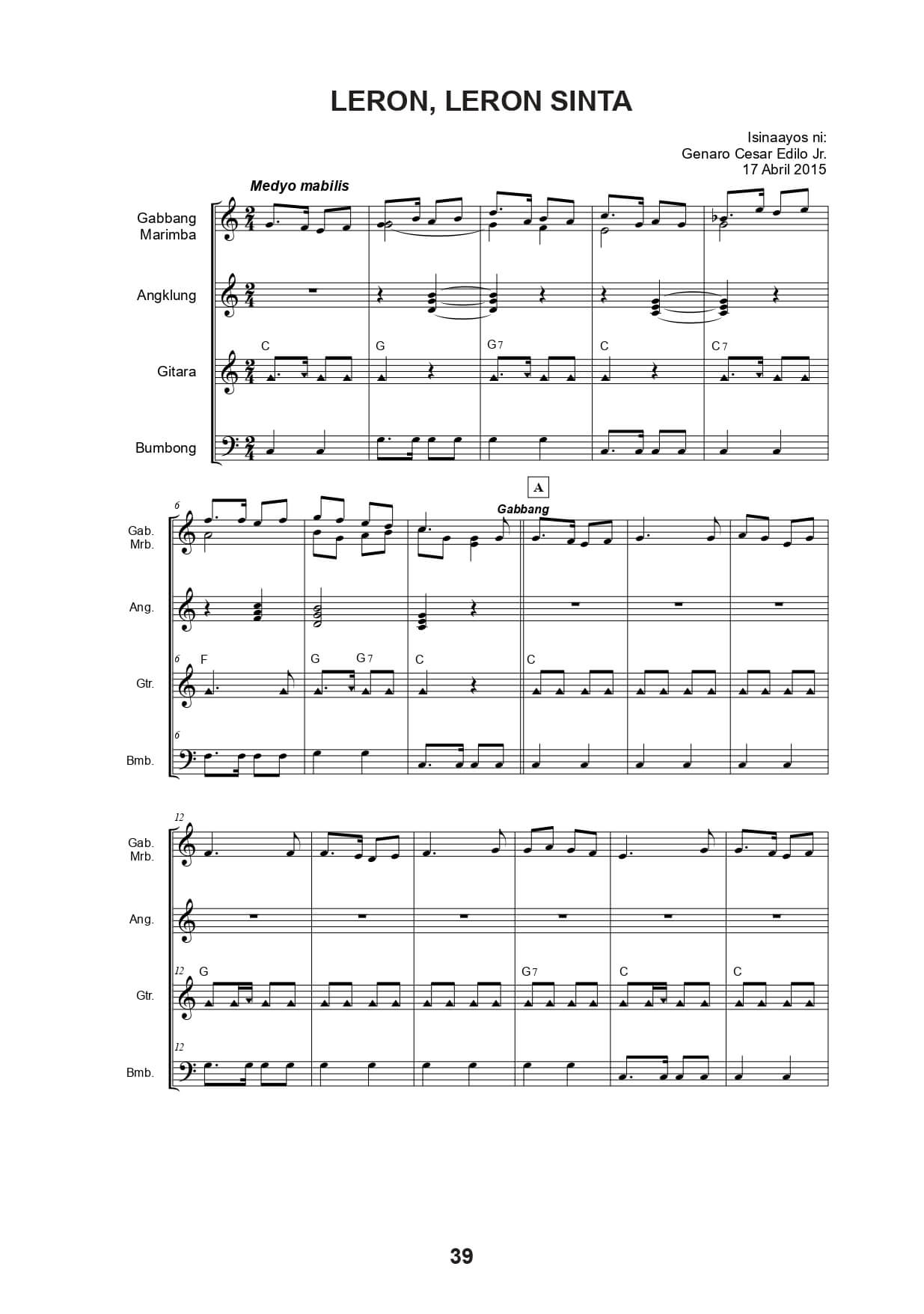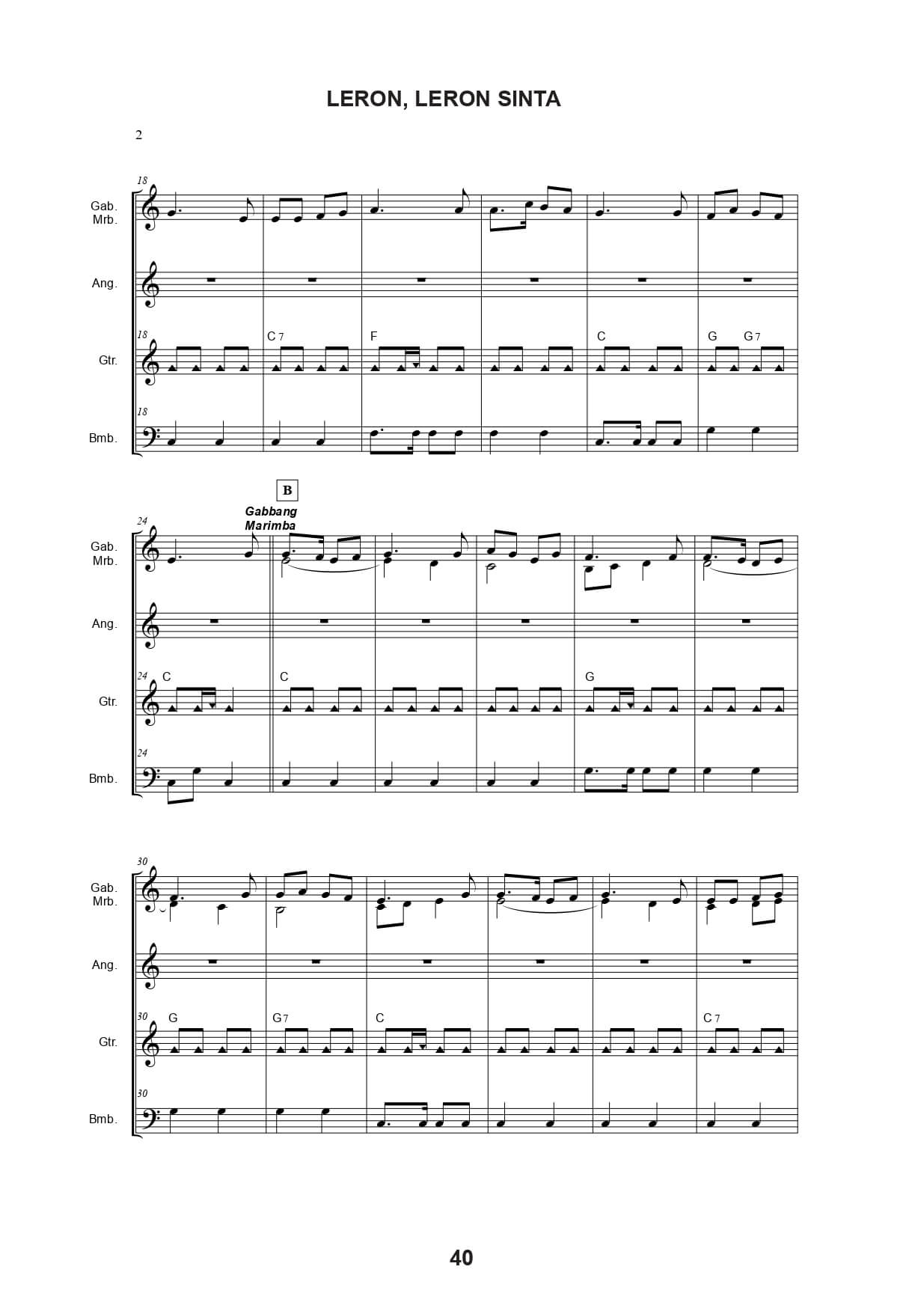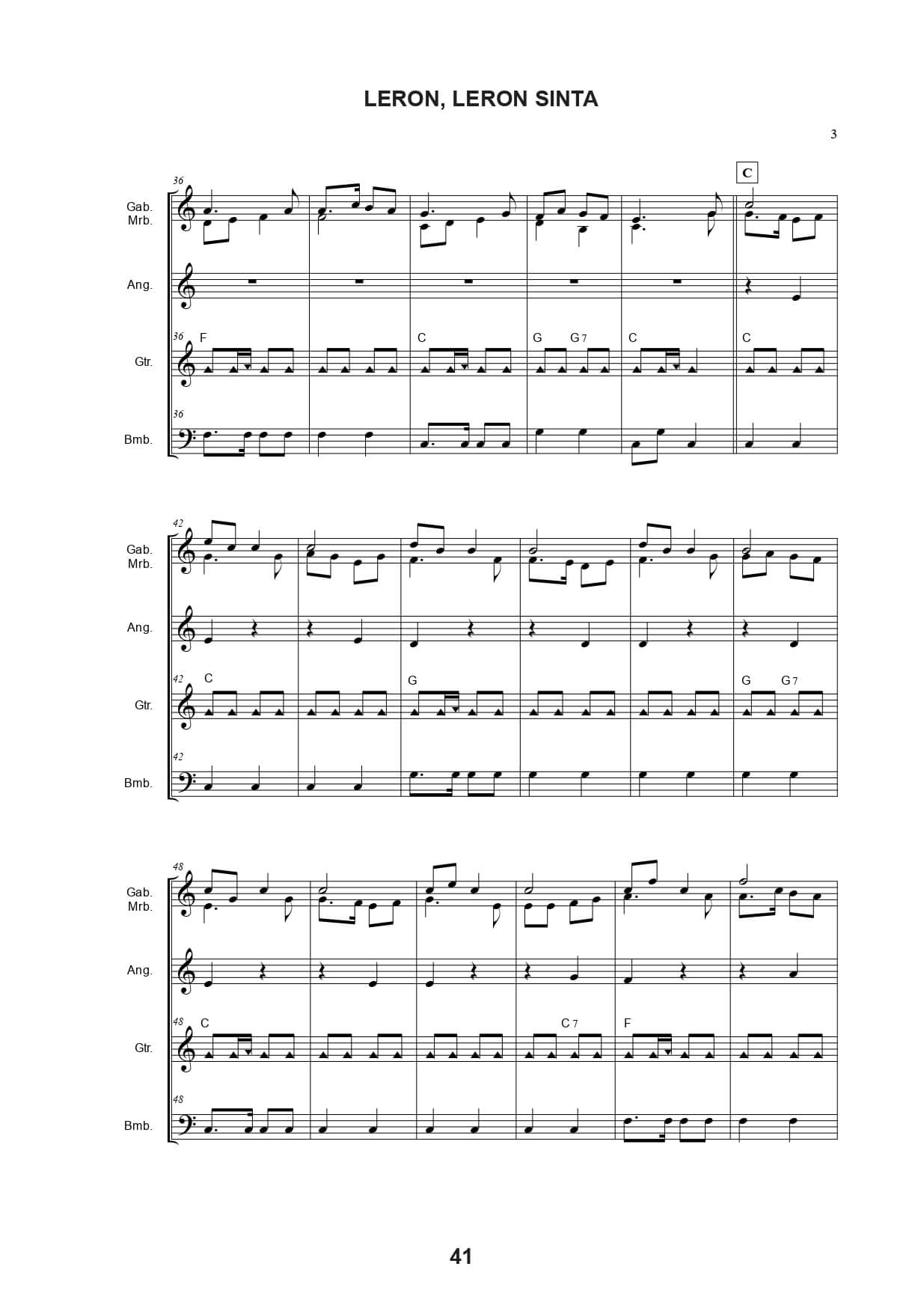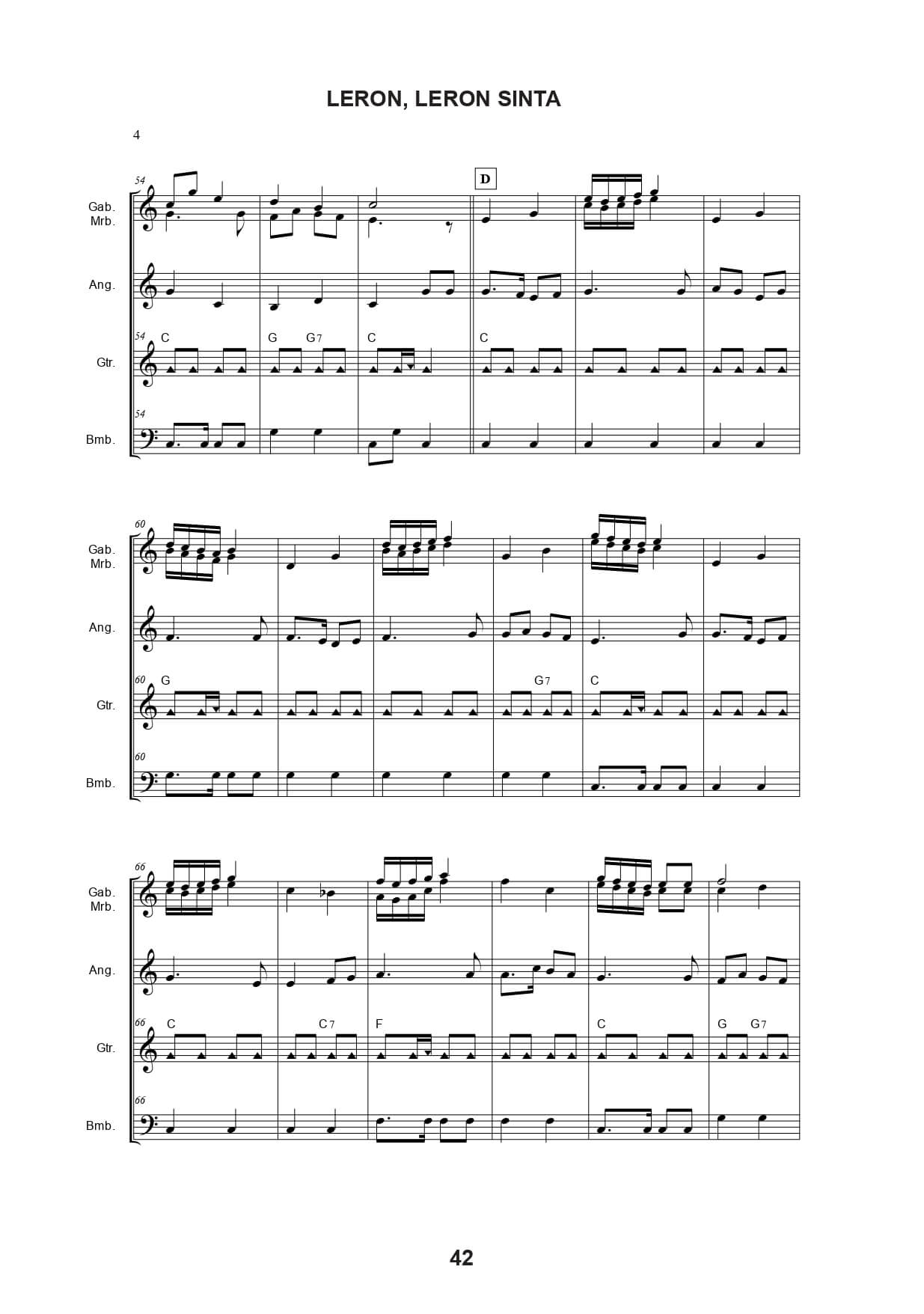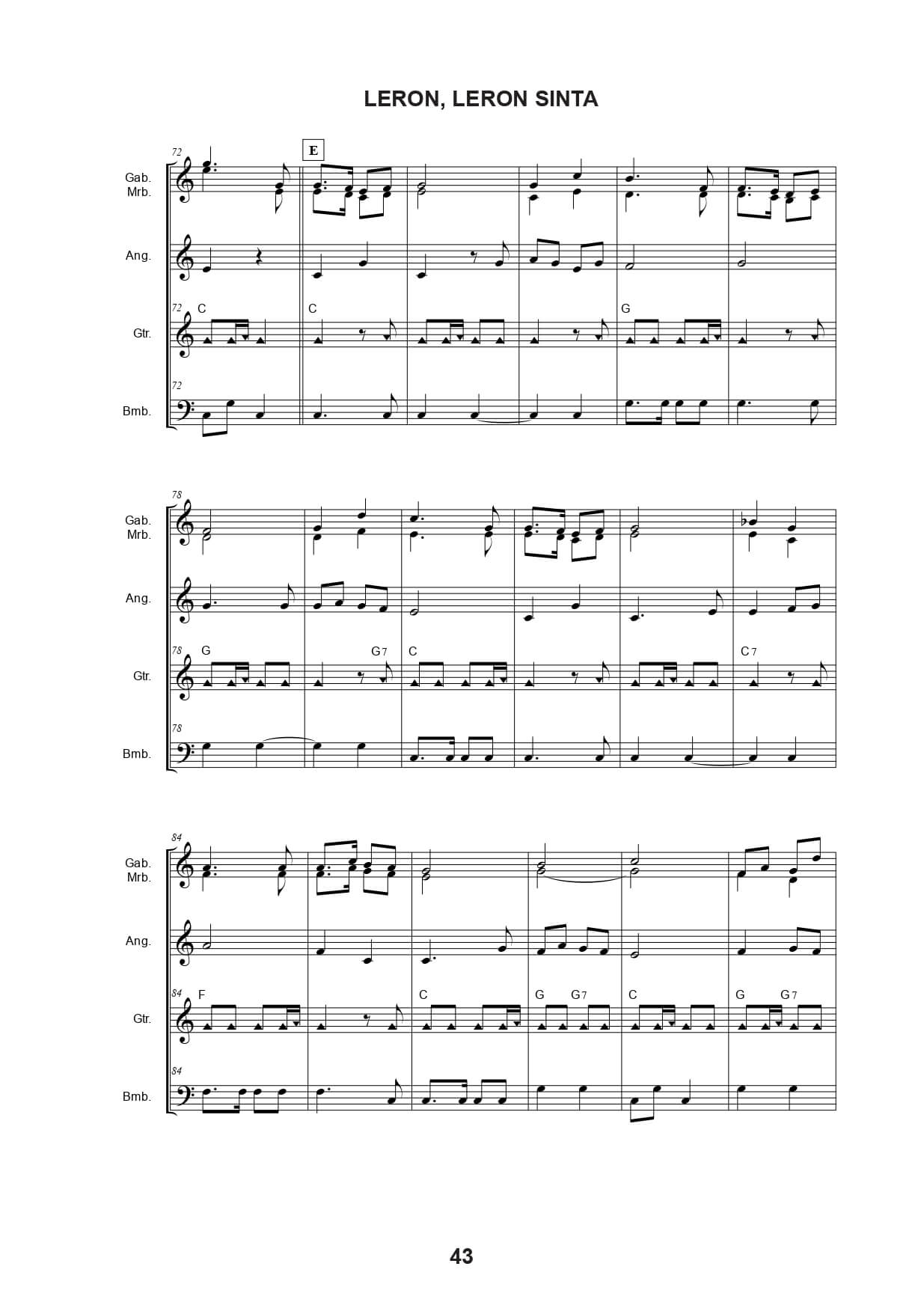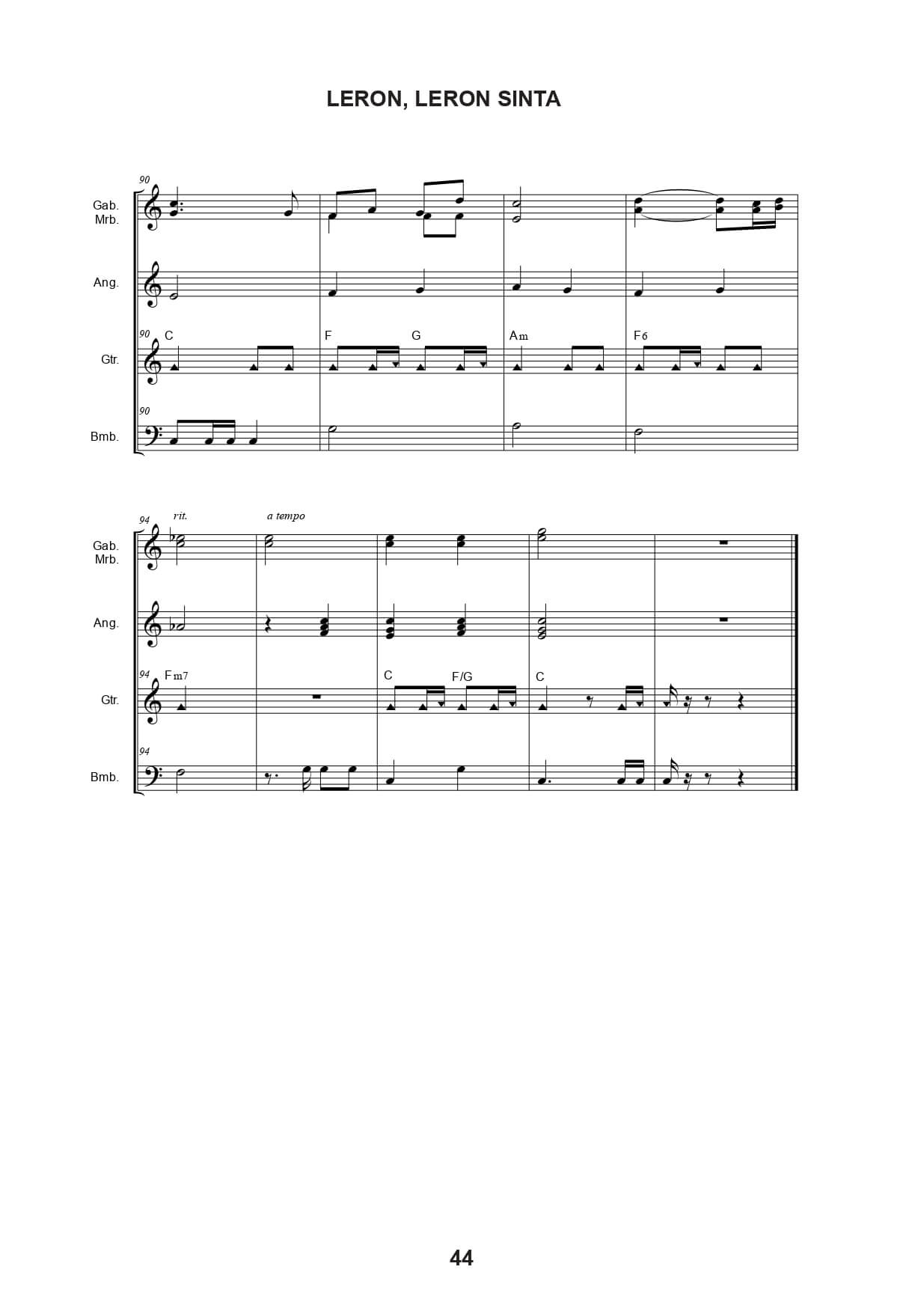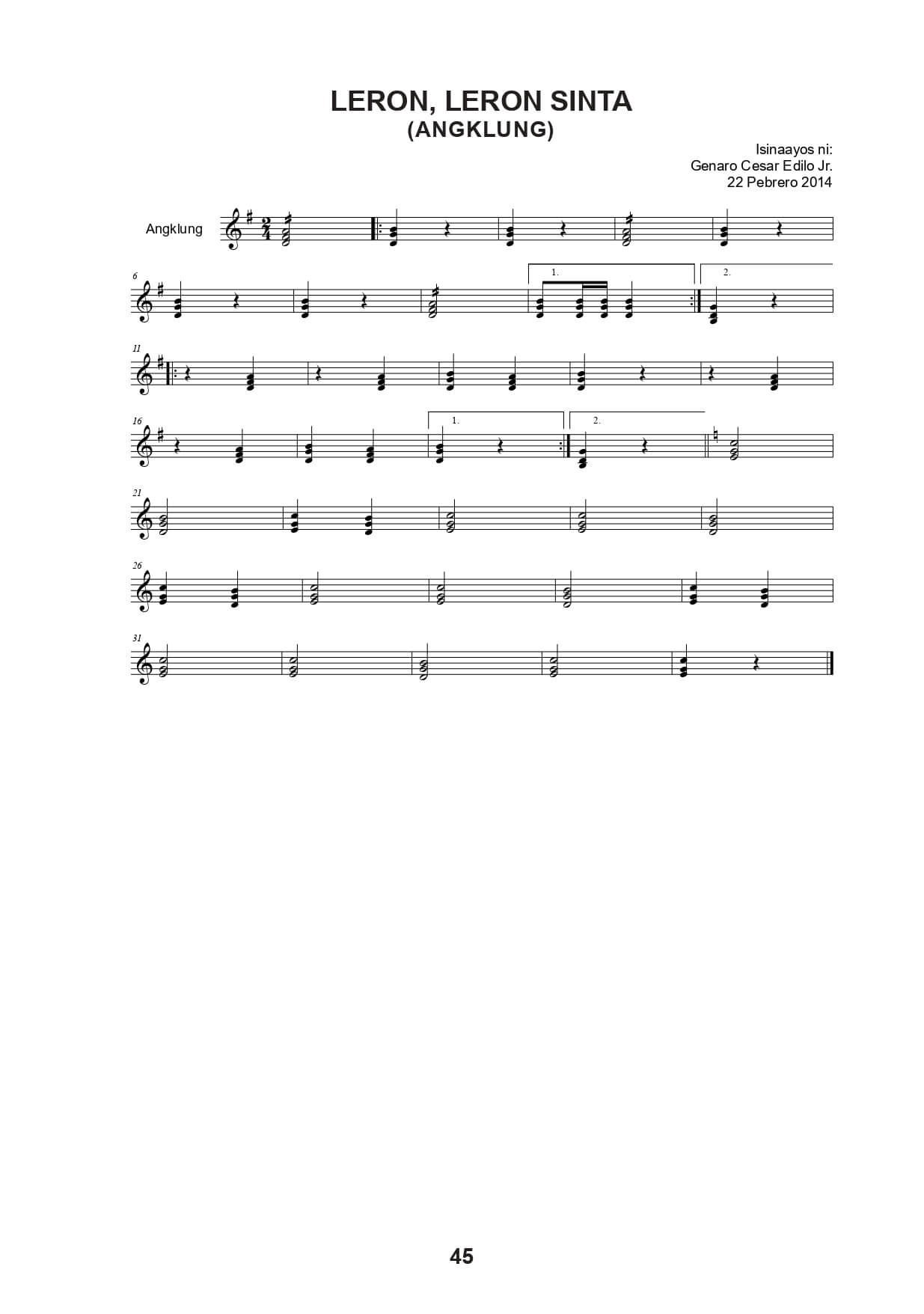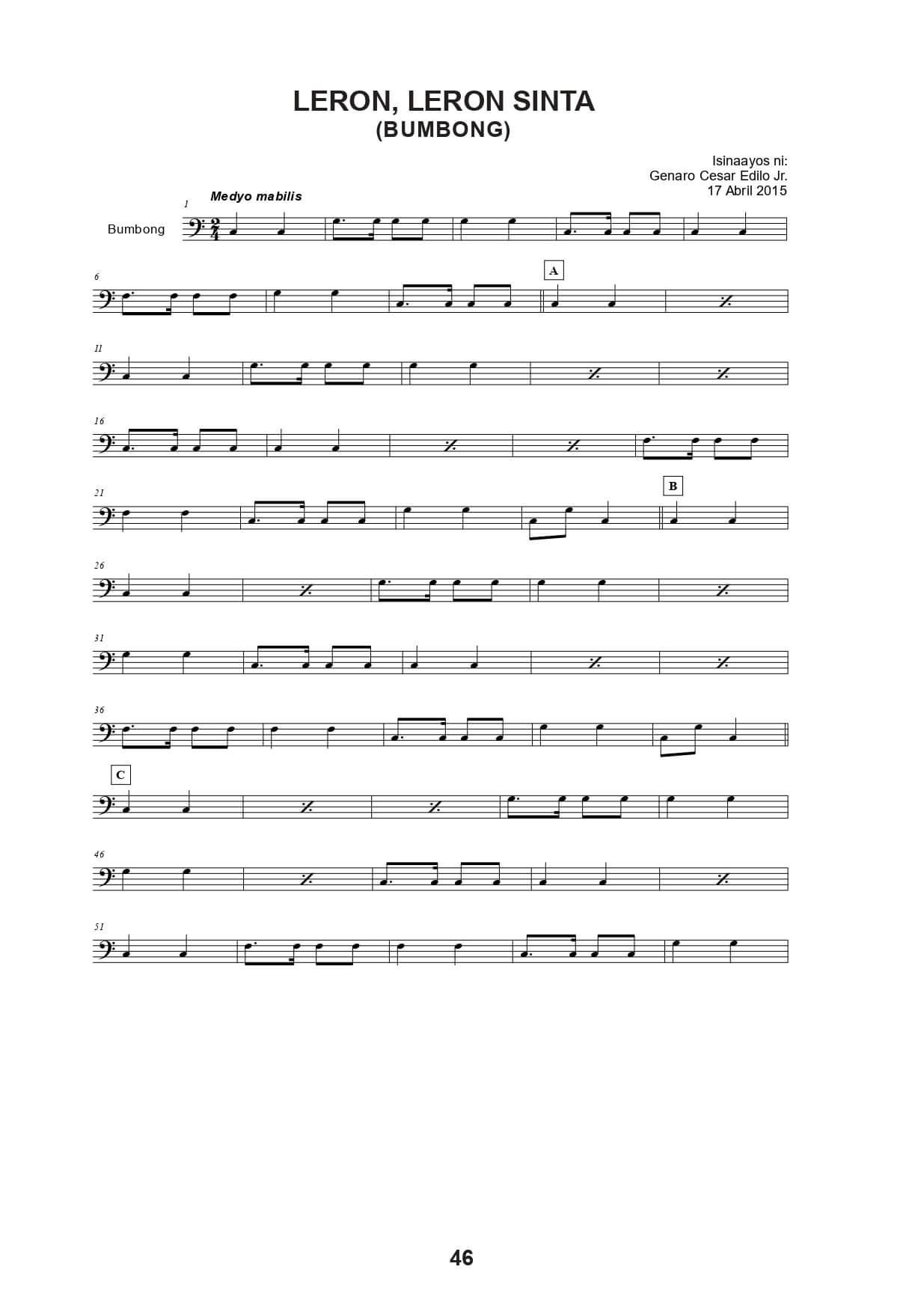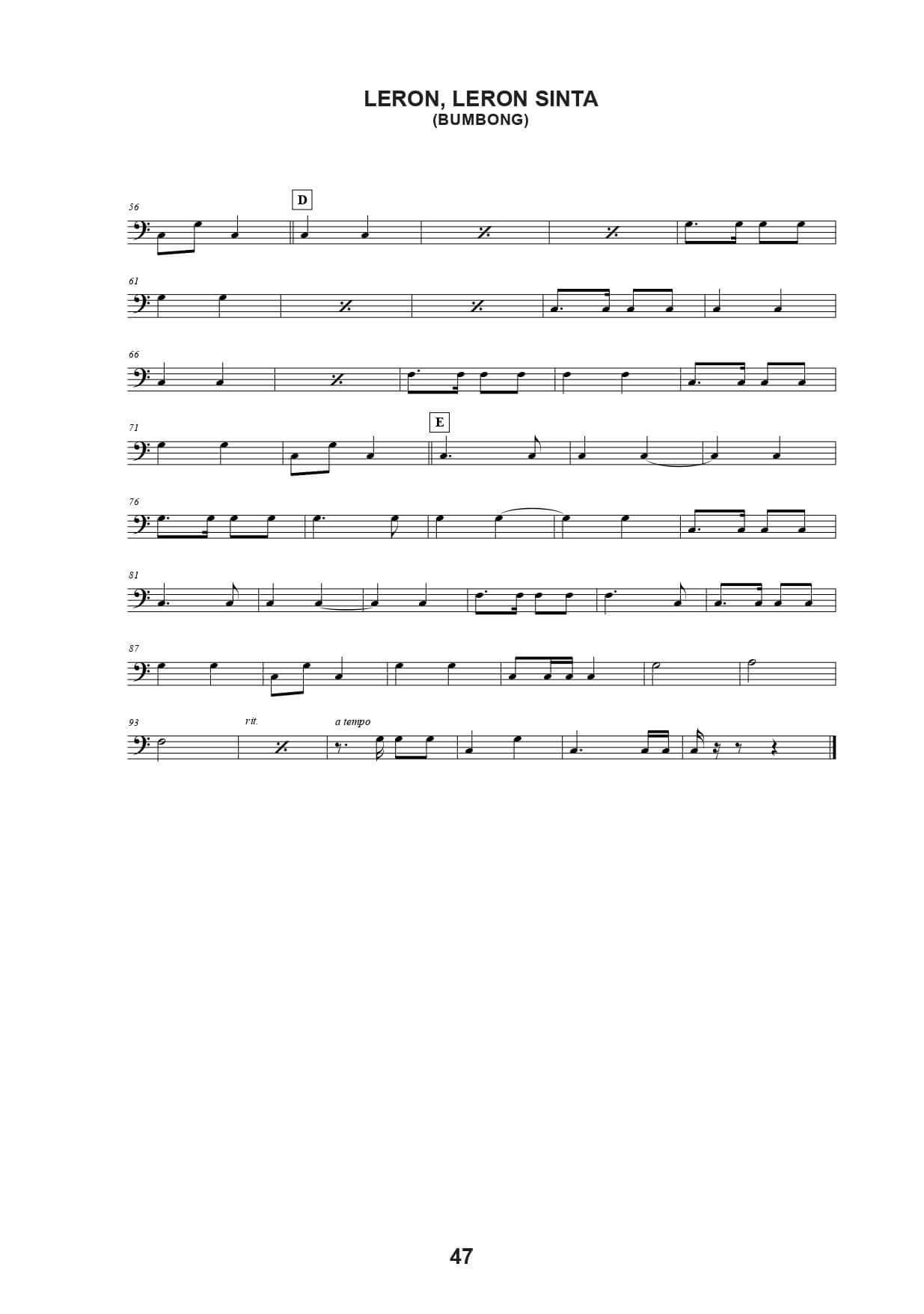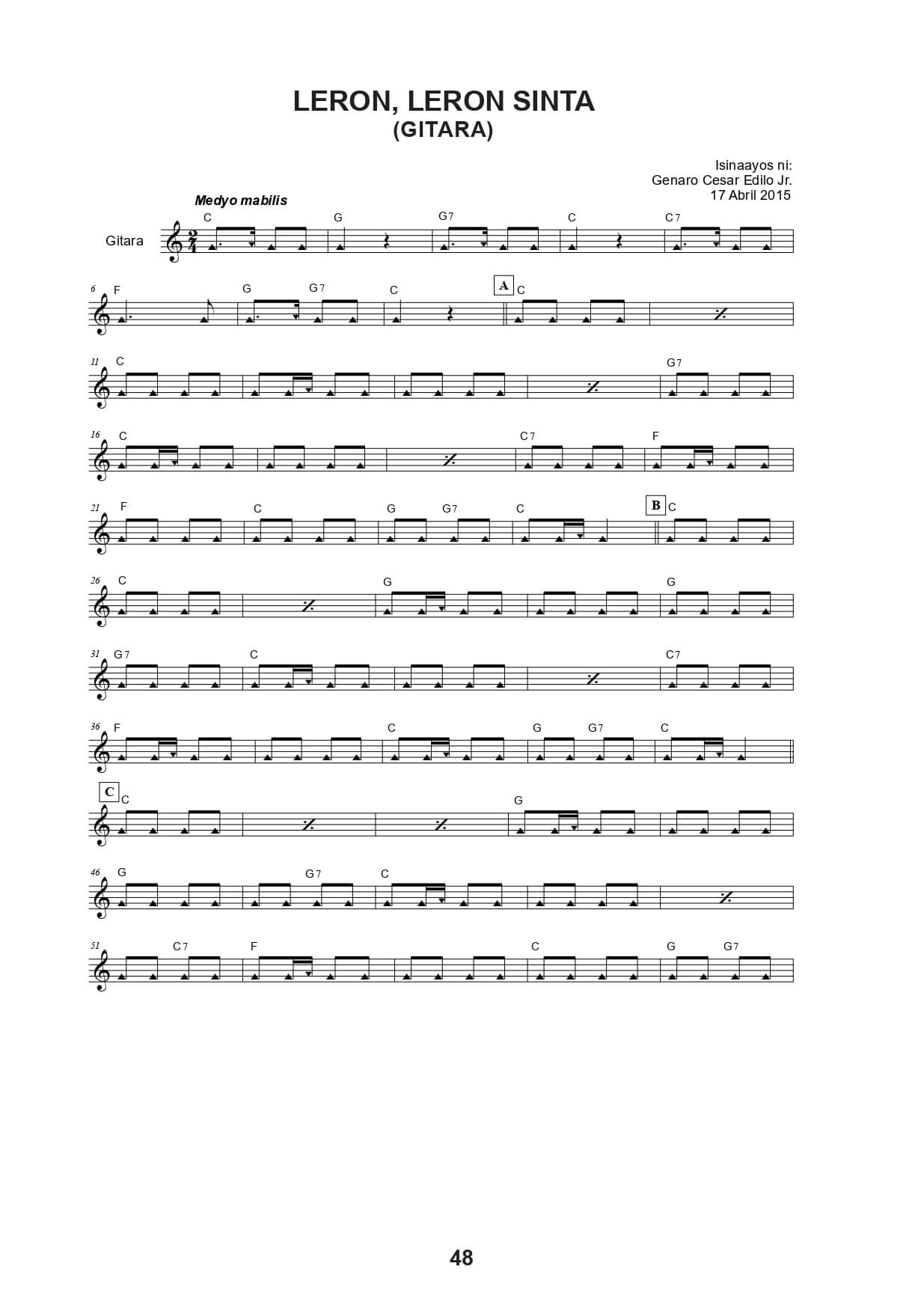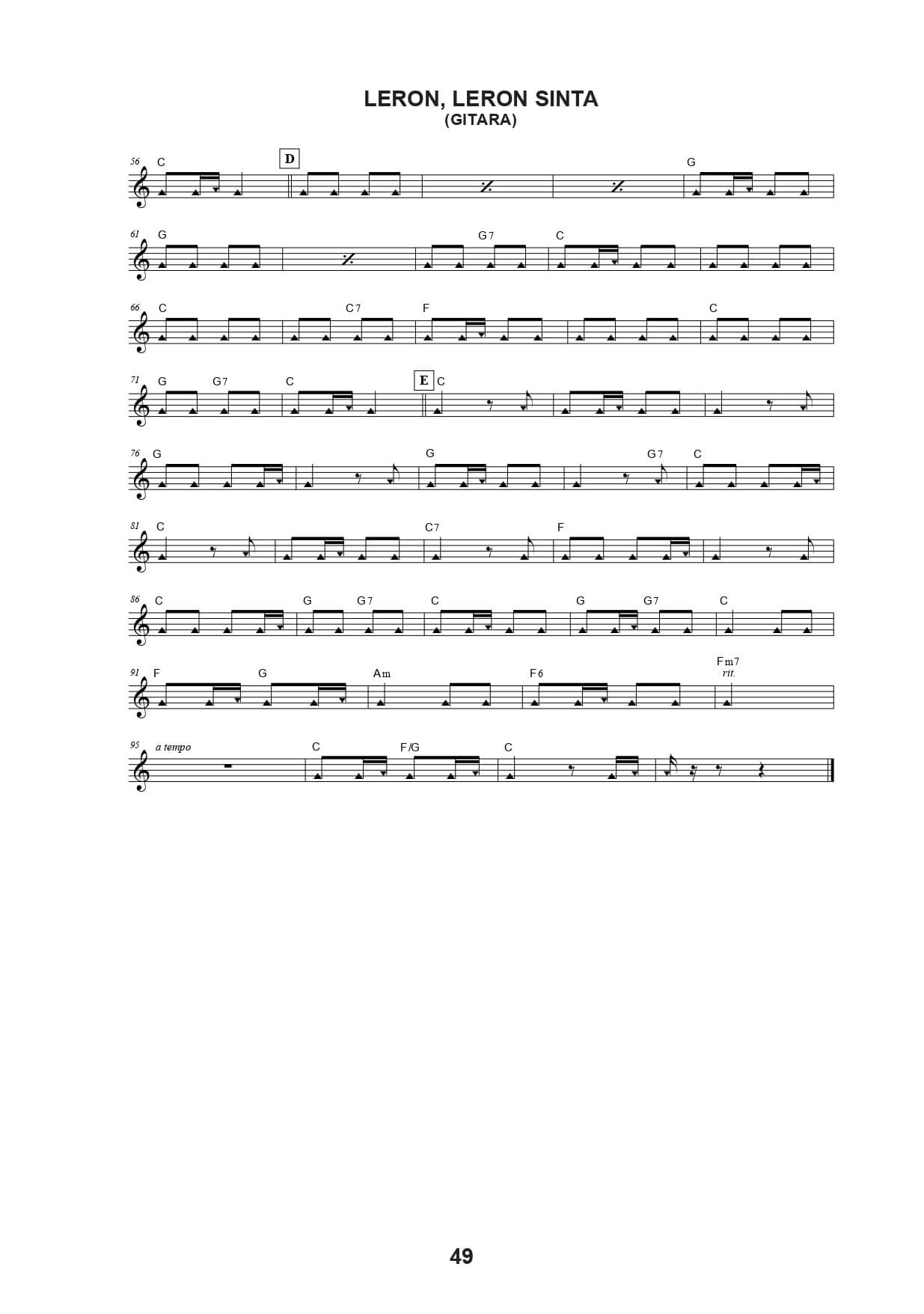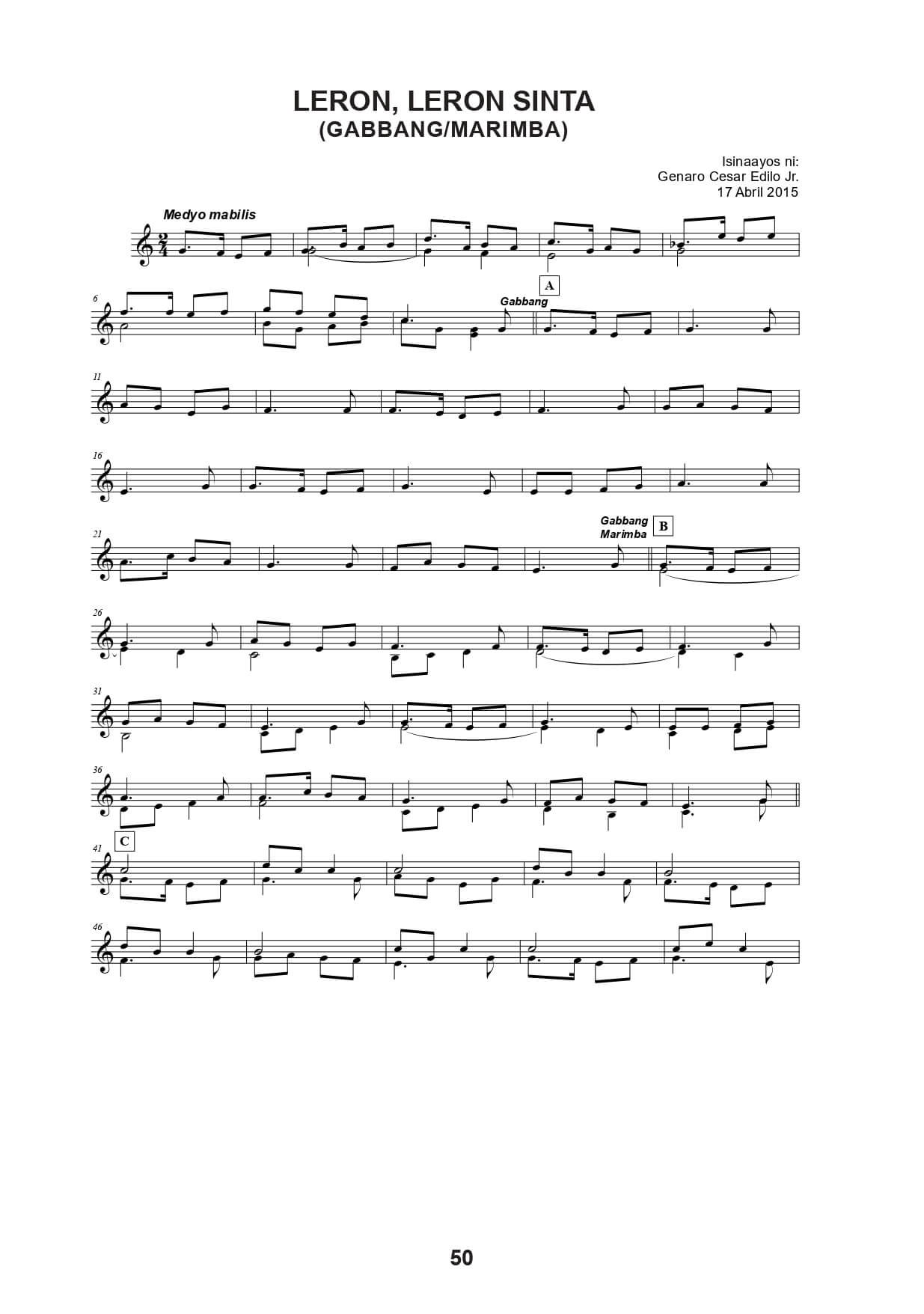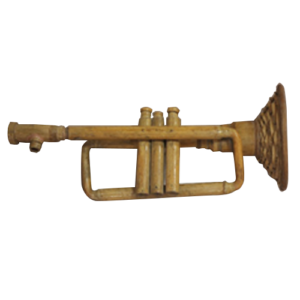Highschool Module
LERON, LERON SINTA REHEARSAL PLAN
Background
Title: Leron, Leron Sinta
Description: Tagalog Folk Song
Arranger: Genaro Cesar Edilo Jr., November 2015
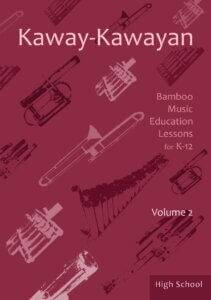
Lyrics
LERON, LERON SINTA
Buko ng papaya
Dala-dala’y buslo
Sisidlan ng sinta
Pagdating sa dulo’y
Nabali ang sanga
Kapos kapalaran
Humanap ng iba.
Gumising ka Neneng,
Tayo’y manampalok
Dalhin mo ang buslo’t
Sisidlan ng hinog
Pagdating sa dulo’y
Lalambalambayog
Kumapit ka Neneng, baka ka mahulog.
“Leron, Leron Sinta,” or “My Dear, Little Leron,” is a popular folk song from the Tagalog region. Many stories are circulating about the origin of this music. Some say that the song is about two sweethearts, Leron and Neneng, picking fruits from the papaya and tamarind trees. It is traditionally a labor song, representing the people picking papaya during the harvest season.
The song’s melody is super catchy and often described as a children’s song. It features a call-and-response verse, usually performed by a man and a woman. Many Filipinos are familiar with the music, making it one of today’s most popular folk songs. It is also a famous composition for choral or instrumental groups to play.
IV. PERFORMANCE GUIDE 
A. MATERIALS
- Audio tracks: Scan QR code on the right
- Sheet music: Leron, Leron Sinta arrangement by Genaro Cesar Edilo Jr.
B. GUIDE TO THE PIECE
The piece is divided into five sections. The key of the piece is in C Major, and the time signature is in 2/4, which means each measure receives two quarter-note beats. It is lively and playful; therefore, the tempo is fast. The music’s intro comprises eight bars before going to Section A. In the intro, the piece’s central theme is Tim-ri titi, which is played repeatedly until the sixth measure. The gabbang plays the upper voice, and the marimba plays the lower voice. The angklung plays a prolonged triad chord. The guitar and bumbong play the accompaniment, alternating the main rhythm of the piece.
Section A: In the first section [A], the gabbang and marimba play the melody in unison while the angklung is at rest. The guitar plays a four 8th note strumming pattern except in measures nos. 12, 16, 20, and 24. The bumbong plays two quarter notes except in measure nos. 12, 16, 20, and 24.
Section B: In the second section [B], there is a slight change. The angklung is still at rest until part C. The melody is played by the gabbang, while the marimba plays the lower voice. I would recommend practicing this part repeatedly until it is perfect. The guitar and bumbong still play the same as what they played in the previous section.
Section C: In the third section [C], the marimba now plays the main melody while the gabbang plays the descant. The angklung starts playing the upbeat or 2nd beat of measure no. 41 to the downbeat or 1st beat of measure no. 42. This pattern is repeated until measure no. 54. There are still no changes in guitar and bumbong.
Section D: The fourth section [D] is a little bit more complicated. The melody shifted to angklung. There are changes in gabbang and marimba. In measure no. 58, it plays a two-quarter note following a four 16th-note and one quarter-note descending-ascending scale. This pattern is repeated up to measure no. 71. The guitar and bumbong still play the same part.
Section E: The final section [E] features an alternation of melody between the instruments. The gabbang plays the main theme, and the marimba plays the second voice. Then, the melody will shift to the angklung. The guitar strumming pattern has changed—the strumming pattern in these particular measures: nos. 73, 75, 77, 79, 81, 83, 85, feature a syncopation pattern of a quarter note, a rest, and an 8th note upbeat. The pattern in measures no. 74 and no. 76 is a little tricky. In the first beat of measure no. 74, the rhythmic pattern in the first beat is Titiri-titi, then it changes to Titi-Titiri in measure no. 76. This sequence is also repeated in measures 78, 80, 82, 84, and 86. The building up of the ending begins in measure #88. There is a ‘ritardando’ mark in measure no. 94, which means the music will gradually decrease speed. The gabbang plays a running note melody, and the marimba plays the inner voice. It is followed by ‘a tempo’ in the next measure, which means the music will return to its normal tempo. The piece will end with guitar and bumbong’s last three 16th notes. Make the ending clear and distinct.
REHEARSAL PLAN
| Time Allotment | Material | Instrument | Measures | Objective | Activity | Assessment |
| 5 minutes | All instruments | Develop ear training, and intonation practice.
Develop proper organization skills in handling the group. |
Pre-practice activities
Exercise classroom management, such as cleaning the room, fixing the stands, and arranging the seats per instrument. |
Check for tone matching in intonation exercises. | ||
| Prepare and tune the instruments. | ||||||
| Inspect the materials needed such as music sheets, mallets, guitar plectrum. | ||||||
| Warm up for all instruments. | ||||||
| 5 minutes | Leron, Leron Sinta | guitars and bumbong | Intro Part
m. 1–8 |
Develop sight- reading skills.
Play the rhythm pattern clear and distinct. |
Sing or clap the rhythmic syllables first.
For guitars, Timri-Titi, Ta. |
Guitar/bumbong players should be able to execute the rhythm accurately. |
|
For bumbong, Ta-ta, Timri-TiTi |
Guitarists should be able to play the chords correctly. | |||||
| Play instrument parts one by one.
Repeat as many times as needed. |
Bumbong players should be able
to produce good sound. |
|||||
| The teacher should correct how the players execute their parts if necessary. |
| Time Allotment |
Material |
Instrument |
Measures |
Objective |
Activity |
Assessment |
| 10
minutes |
gabbang/ marimba | Intro
Part m. 1–8 |
Develop sight- reading skills.
Execute proper playing techniques in gabbang and marimba. |
Sing the melody
first.
Play the passage slowly, until students become familiar with the notes. |
Marimba players should be able to execute the proper playing technique
(tremolo, staccato, legato). |
|
| angklung, guitar, and bumbong |
For angklung, students should be able to tremolo their notes. |
Angklung players should execute fine tremolo in their instruments.
The teacher should correct how the players execute their parts. |
||||
| 10
minutes |
guitar and bumbong | Part A
m. 9–24 |
Develop sight- reading skills.
Play a clear and distinct rhythm pattern.
Execute proper playing technique in guitar and bumbong. |
Sing or clap the rhythmic syllables.
Play the rhythm at a slow tempo until the students become comfortable at a faster tempo.
Repeat as many times as needed. |
Guitar players should be able to play the chord progression and
strumming pattern accurately.
Bumbong players should be able to produce a good resonant sound. |
|
| The teacher should correct how the players execute their parts. | ||||||
| 10
minutes |
gabbang / marimba | Part B
m. 9–24 |
Play the melody in unison. | Play the part at a slow tempo until the players
memorize the part. |
The students all together should be able to play the melody with clarity. | |
| The teacher should correct how the players execute their parts. |
| Time Allotment |
Material |
Instrument |
Measures |
Objective |
Activity |
Assessment |
| 10
minutes |
gabbang and marimba | Part B
m. 25–40 |
For marimba, execute proper playing technique on prolonged notes, specifically in measures #25,
29, and 33. |
Marimba players sing the lower voice and contrapuntal melody.
Marimba players play alongside the gabbang. |
The teacher should correct how the players execute their parts. | |
| The students should be able to play and produce good harmony. | Play slowly until they are in sync. | |||||
| 10
minutes |
All instruments | Measure no. 1–40 | The group should be able to play from introduction
to part B, all together. |
Ensemble playing | The group should be able to play the piece with appropriate tempo, rhythm, and dynamics. | |
| The teacher should correct how the players execute their parts. | ||||||
|
B R E A K |
||||||
| 15
minutes |
gabbang/ marimba
angklung, gabbang/ marimba
angklung |
Part C
m. 41–56 Part D m. 57–72 |
The students should be able to play and produce good harmony.
Execute the proper technique in playing the running notes.
Angklung players should be able to play the main melody with clarity. |
Let the students sing the upper melody for gabbang and marimba, and the accompaniment for angklung.
Play slowly until they play together correctly. Play the running notes in a slow tempo first.
Repeat as many times as needed. |
The teacher makes sure that there is harmony as the ensemble plays.
The teacher should ensure that proper technique in playing is applied by the students.
If there are difficult parts to play, the teacher will demonstrate how to play them. |
|
| Sing the melody first to familiarize themselves with their parts. | ||||||
| Time Allotment |
Material |
Instrument |
Measures |
Objective |
Activity |
Assessment |
| 15
minutes |
gabbang/ marimba
angklung |
Part E
m. 73–98 |
Play their parts correctly and produce good harmony. | Start playing the notes at a slow tempo. | If there are faulty parts, the teacher will demonstrate how to play them. | |
|
guitar and bumbong |
Play the notes with the correct rhythm. |
Sing or clap the notes and rhythm first. | ||||
|
Execute the ritardando in m. 94 and go back to a tempo in m. 95. |
Follow the teacher’s cue, especially in the ritardando part. | |||||
| 10
minutes |
Meas. 1–98 | Play as a group
Play the entire piece while observing the appropriate tempo, rhythm, and dynamics. |
Ensemble playing | If there are faulty parts, the teacher will demonstrate how to play them.
Identify what parts are not clean and make adjustments for the next practice. |
||
| 10
minutes |
All instruments | Practice self and group evaluation. | Post-rehearsal evaluation | The teacher provides feedback and suggestions about the group’s performance. | ||
| Members can also evaluate and assess their performance. |
No content.
No content.
No content.
No content.
No content.
No content.
Science in a creative industry.
The DOST-FPRDI has a Bamboo Musical Instruments Innovation R&D program aimed at improving the quality of locally-made bamboo musical instruments (BMIs) through science and innovative technologies. The program seeks to standardize the production of selected BMIs, develop prototype designs, analyze raw material sources and existing markets, and build a BMI processing facility. In addition, the program aims to document the ethnocultural story behind several BMIs and identify the bamboo species used in BMI production to promote public awareness and appreciation of the cultural importance of these musical instruments. The program is a collaboration with the University of the Philippines and Philippine Normal University for teaching modules and analyzing sound quality and standardization of BMI design. The DOST Grants-in-Aid program provides funding.
PhBMI

